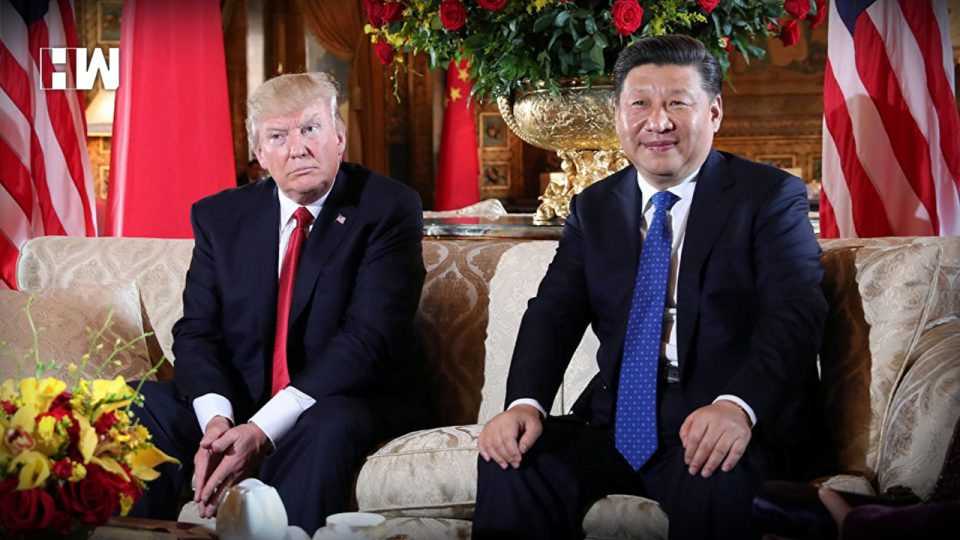Washington | US President Donald Trump said he would soon meet his Chinese counterpart Xi Jinping to try to secure a comprehensive trade deal between the world’s two largest economies as the two-day talks to resolve the conflict that has rattled the global economy ended without any agreement.
The US and China have been locked in an escalating trade spat since early 2018, raising import tariffs on each other’s goods.
Last year, Trump imposed tariff hikes of up to 25 per cent on USD 250 billion of Chinese goods. The move prompted China to increase tariffs on USD 110 billion of US goods. Trump and Xi agreed to halt any further tariff increases for 90 days beginning January 1.
During the latest round of talks, US Trade Representative Robert Lighthizer led the US delegation while Vice Premier Liu He headed the Chinese side.
The White House said in a statement that the two sides had made progress but that “much work remains to be done.” The administration said it would keep a “hard deadline” of March 2, at which point it would escalate import taxes on USD 200 billion in Chinese good if there was no deal.
Trump, speaking at the White House on Thursday during a meeting with Liu, said he was optimistic the world’s two largest economies could reach “the biggest deal ever made”.
Responding to a question, Trump said the two countries have made “tremendous progress in trade negotiations. It doesn’t mean you have a deal, but I can say there is a tremendous relationship and warm feeling.”
Trump has reiterated that the US tariffs will increase unless China agreed to reforms by the March 1 deadline.
“There are some points that we don’t agree to yet, but I think we will agree. I think, when President Xi and myself meet, every point will be agreed to,” said Trump.
“We’re going to have a great trade deal with China if it all works out it’s going to be great for both countries — not just us, not just them,” he added.
China too struck an upbeat tone on the outcome of the two-day talks, noting that negotiators had discussed a range of issues, but focused on the trade imbalance, intellectual property rights protection, and the implementation mechanism of any eventual deal reached.
“Both sides have also set-out a timeline and road map for the next step of talks,” state-run news agency Xinhua reported.
China agreed to increase imports of US goods and boost cooperation on protecting intellectual property, it said.
China is facing the daunting task of presenting a credible plan to meet Trump’s demands to cut down the USD 375 billion trade deficit.
At the heart of the conflict is the US demand that China should stop taking predatory actions — from intellectual theft to the forced handover of technology by US companies — in a drive to become a global power in such fields as robotics and electric cars. The Trump administration also complains that Beijing unfairly subsidizes its own tech companies.
China has denied that it deploys any such tactics.
During talks between the two sides, the Chinese delegation read out a letter from Xi in which he said China-US relations were at a “critical” stage.
“I hope that our two sides will continue to have mutual respect.”
Both counties should meet each other halfway in order to reach an early agreement that works in the best interest of both sides .such an agreement will send a positive message to our two people and the broader international community, the letter from Xi said.
Trump described it as a beautiful letter. The leaders are expected to meet soon.
“We haven’t set up a meeting yet…we’re working on seeing where everybody is. Both countries would like to see a positive result, he added.
He also said China has agreed to purchase five million tonnes of US soybeans.
Later, the White House said, the talks covered a wide range of issues, including the ways in which the US companies are pressured to transfer technology to Chinese companies; the need for stronger protection and enforcement of intellectual property rights in China; and the numerous tariff and non-tariff barriers faced by US companies in China.
They also discussed the harm resulting from China’s cyber-theft of the US commercial property; how market-distorting forces, including subsidies and state-owned enterprises, can lead to excess capacity; and the need to remove market barriers and tariffs that limit the US sales of manufactured goods, services, and agriculture to China.
Among other things, the American and Chinese delegation discussed are the role of currencies in the US-China trading relationship.
The two sides also discussed the need to reduce the enormous and growing trade deficit that the United States has with China.
The US-China trade hostilities have weakened both economies, shaken financial markets and clouded the outlook for global trade.
As an independent media platform, we do not take advertisements from governments and corporate houses. It is you, our readers, who have supported us on our journey to do honest and unbiased journalism. Please contribute, so that we can continue to do the same in future.

